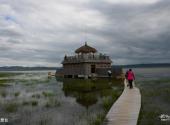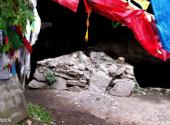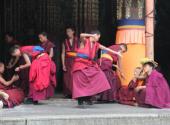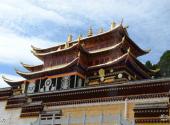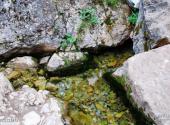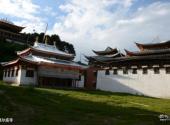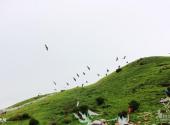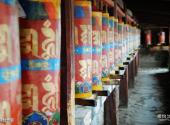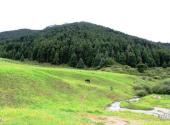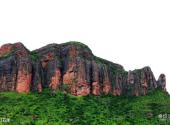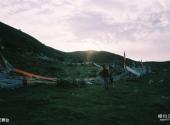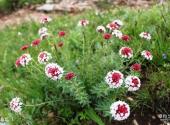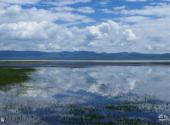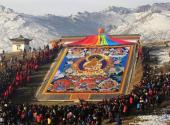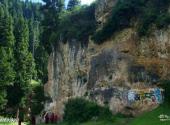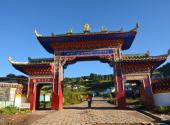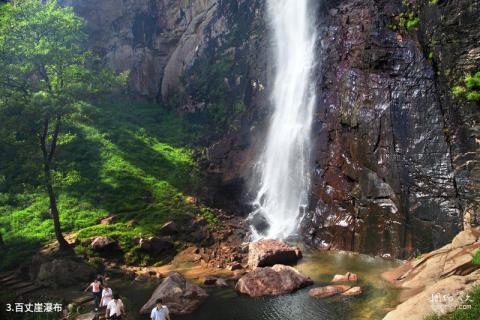
Scenic spot introduction:
Langmusi Temple It is a small town hidden in the mountains, located 90 kilometers south of Luqu County, Gannan Tibetan Autonomous Prefecture. Langmusi Temple The township is located on the bank of the Bailong River at the northern foot of Guoermangliang, a branch of Xiqing Mountain, and is located at the junction of Qinghai, Gansu and Sichuan provinces. Langmusi Temple The place is ethereal, with mountains and waters, and the scenery is very beautiful, and it is known as the "Switzerland of the East". The magnificent temple buildings and the well-arranged tower-shaped houses are hidden among the lush ancient cypresses and pines, like a paradise on earth.Attractions distribution:
Langmusi Temple It is a quiet and secluded ancient town with the main attractions including Gahai , Langmusi Temple , White Tower , Debate , Back Mountain , Gesang flower , Red Rock Cliff , Sky Burial Platform , Sunbathing Buddha , Gelug Monastery , Namor Grand Canyon , Fairy Cave wait.Scenic spot qualifications:
National 2A-level scenic spots, provincial scenic spotsScenic spot features:
temples, photography, culture, temples, Tibetan culture, plateau sceneryTravel Notes of Travellers:
- Tiedan: Heavenly Qilian (V) Hainan
- Tiedan: Snowstorm in Aba, Death in Gannan
travelling guideline:
1. Horse riding is Langmusi Temple A popular activity, tourists can ride horses into the grassland and experience the primitive nomadic life. Source of Bailong River One-day tours, Red Rock Cliff One-day tour of the loop, two-day tour to experience nomadic life, climb to the top of Huagai Mountain, cross Namor Grand Canyon Two-day tour, etc. You can choose according to your actual situation.
2. Major temple events: held on the 13th day of the first lunar month Sunbathing Buddha On the 14th day of the first lunar month, the Dharma dance is performed, and on the 16th day of the first lunar month, the Maitreya Buddha circumambulates the temple and other ceremonies are held. From the 9th to the 12th day of the sixth lunar month, it is the Xianglang Festival, on the 15th day of the sixth lunar month, it is the Chajian Festival, on the 8th day of the seventh lunar month, the Mila Dharma dance is performed, and on the 29th day of the twelfth lunar month, the Jiuji Dharma dance is performed.
3. Photography tips: Langmusi Temple Winter is the golden season for photography. Langmusi Temple After a small wooden bridge, Gelug Monastery The temple area. There is a small river there, which is one of the main scenic spots for photographers. The river emits steam, and local Tibetan compatriots go there in groups of three or five to bathe, drink water, and fetch water in the morning, as if they were living in a paradise. This kind of landscape only appears in winter. In order to highlight the light and shadow effects, it is best to shoot against the light when the sun comes out.
Best time to visit:
The best season is from May to September, when the temperature is cool and pleasant and the grassland is full of flowers. Gesang flower The climate is cold in winter, but there are many Buddhist activities.
Shopping recommendations:
diet: Langmusi Temple The restaurants are divided into Sichuan restaurants, Hui restaurants and Western and Tibetan restaurants.
Shopping: There are many souvenir shops in the town, and the featured items include silverware, turquoise, sheep heads, cow heads, shawls, etc.
Scenic spot location:
China > Gansu Province > Gannan Tibetan Autonomous Prefecture > Luqu County > Langmusi Temple town
How to get there:
Langmusi Temple There is no train service, so you need to take a shuttle bus, charter a car, or drive to get there. You can drive from Gansu and Sichuan. Langmusi Temple , starting from Lanzhou, arriving via Xiahe and Hezuo, or from Chengdu via Ruoergai.
Scenic area map:
Click to expand the scenic area map
Langmusi Ticket Price:
Spring, summer and autumn: 30 yuan
No ticket sales in winter
Scenic area opening hours:
8:00-17:00

